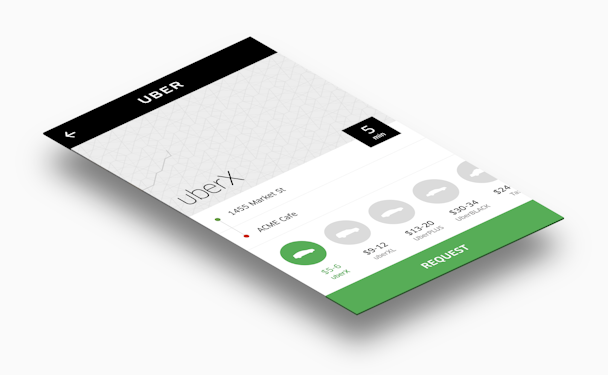Brands can now add end-to-end Uber functionality within their own apps
Uber has created a new widget that will allow third party apps to integrate its service into their own experience.

Last year the brand introduced a ‘Ride Request Button’ that meant brands could add in the option to link to the Uber app. Inspired by the move to messaging app ecosystems in Asia, it’s now created an option for brands to add the entire Uber experience without leaving a branded app.
In a post on Medium, head of product of the Uber Developer Platform, Chris Saad, said: “We’ve dug in with developers in India, China and Australia to learn how they engage with the API and what tools they need to be successful. One of the things we heard from Chinese developers specifically is that they love the easy deployment and smooth handoff to the Uber app, but in certain cases they’d like to deeply integrate the Uber rider experience into their own apps without investing heavily in a custom Uber API implementation.
In response to their feedback we’re announcing the all new ‘Ride Request Widget’, a simple, beautiful way to bring the entire Uber experience — from ride configuration and request all the way to drop-off — right inside your app,” he said.
Apps like WeChat in China and Kakao in South Korea are changing the way people use the mobile web in Asia, effectively becoming portals into people’s lives. Kakao Talk, for example, created its own taxi service based off issues with the over-pricing and under-use of them in Seoul. It now has 84 per cent of the taxi drivers in the city signed up to its service.
The on-demand taxi market is becoming more crowded in many cities but and least in Asia. In one of the smallest markets Singapore, for example, there are at least five widely used taxi apps (let alone the newcomers and less popular apps).
For Uber to succeed, removing friction for the developers will be key. It will have to overcome greater obstacles in markets such as China, where gatekeepers such as Tencent-owned WeChat have stakes in rival firms.
Uber has also adapted the functionality to fit with another concern for developers in its core Asian markets, low bandwidth. The widget will only show simple information about a ride when bandwidth is low, rather than waiting for a map to load.

